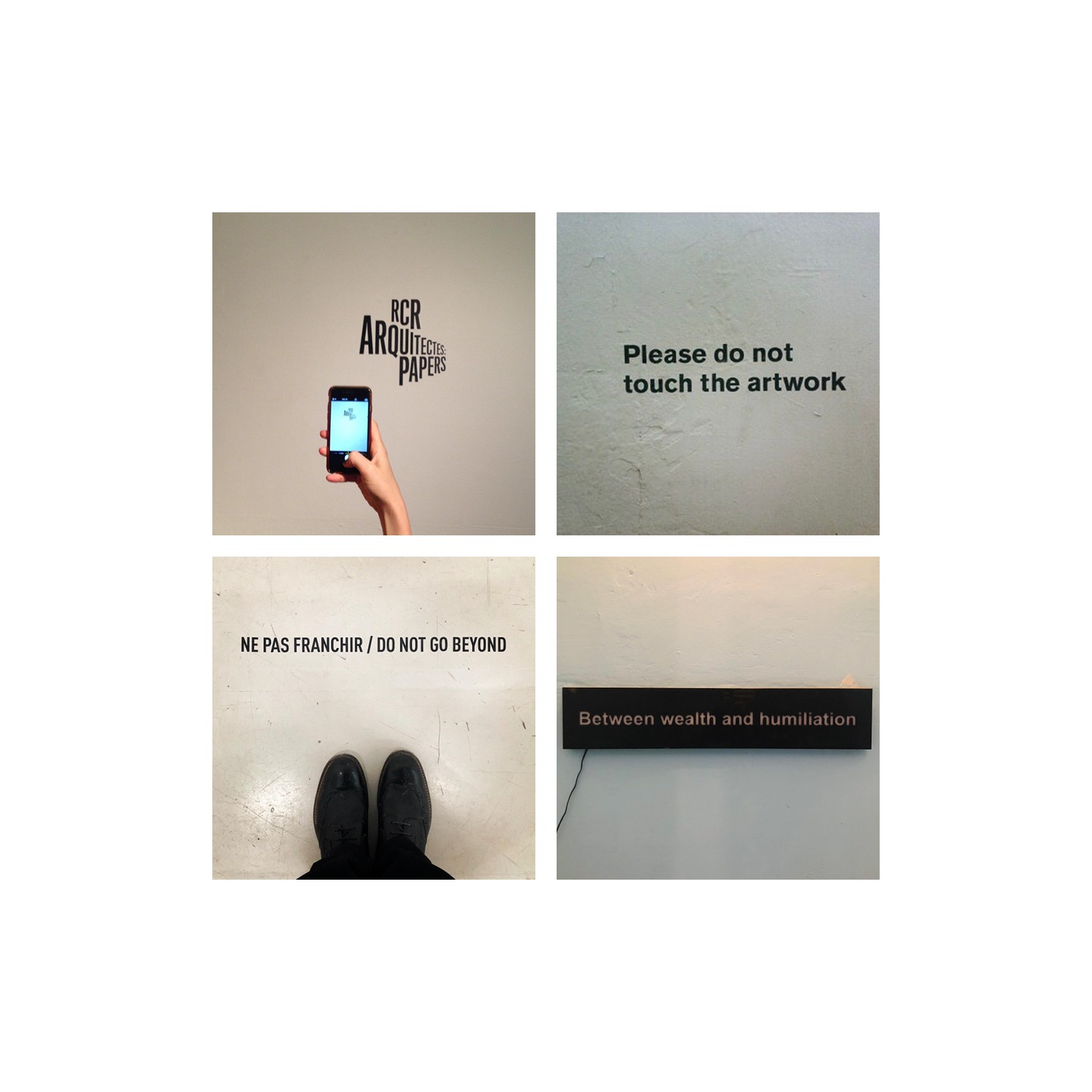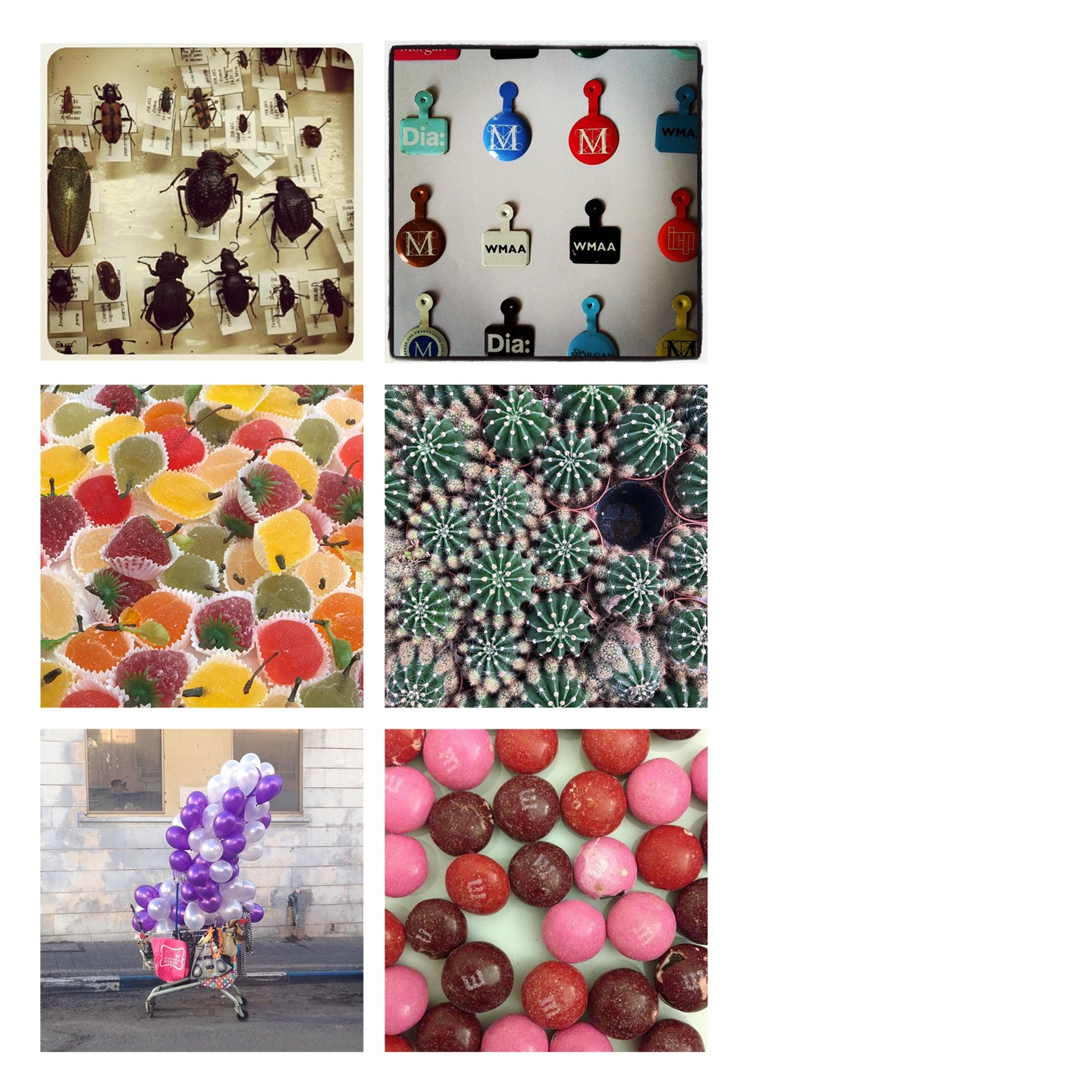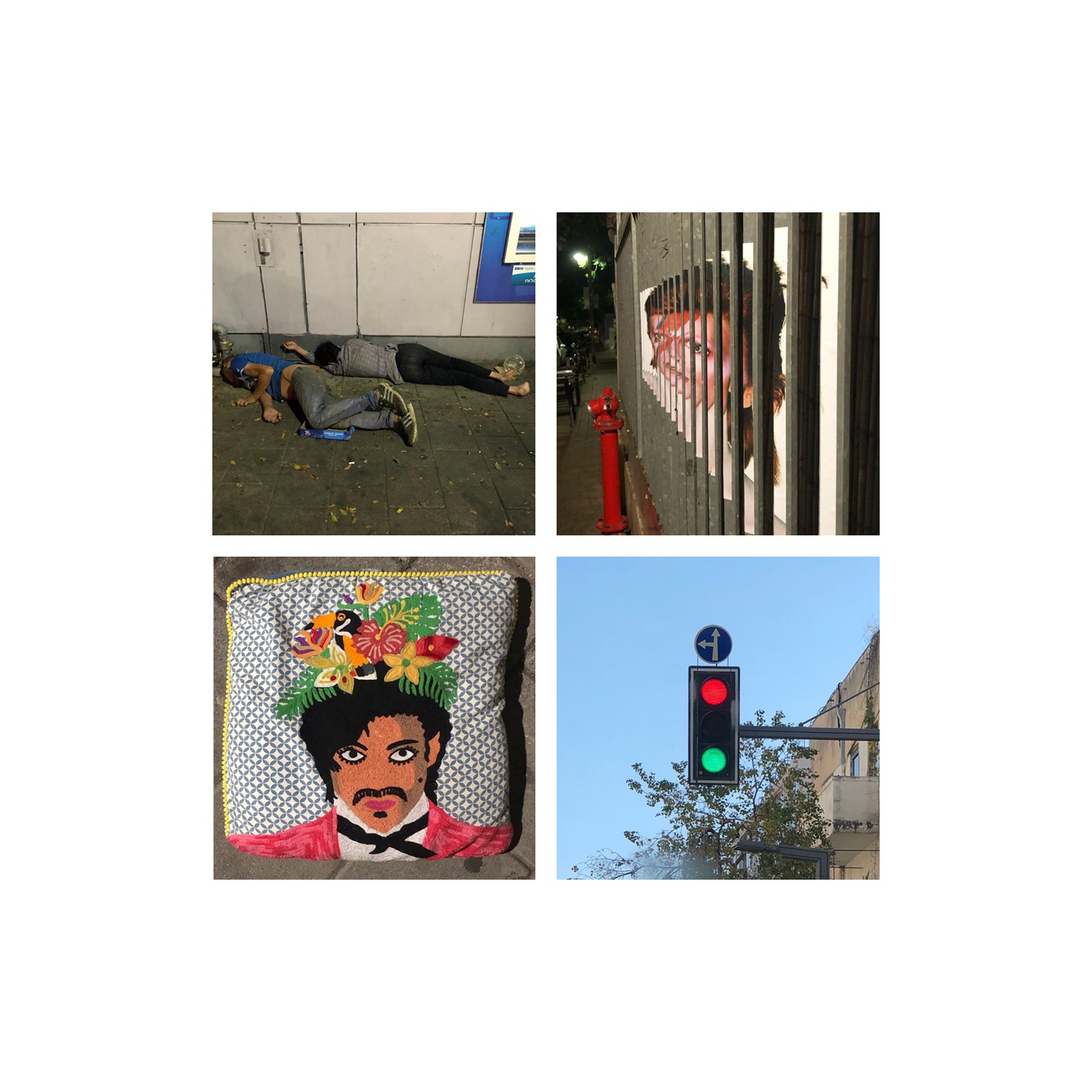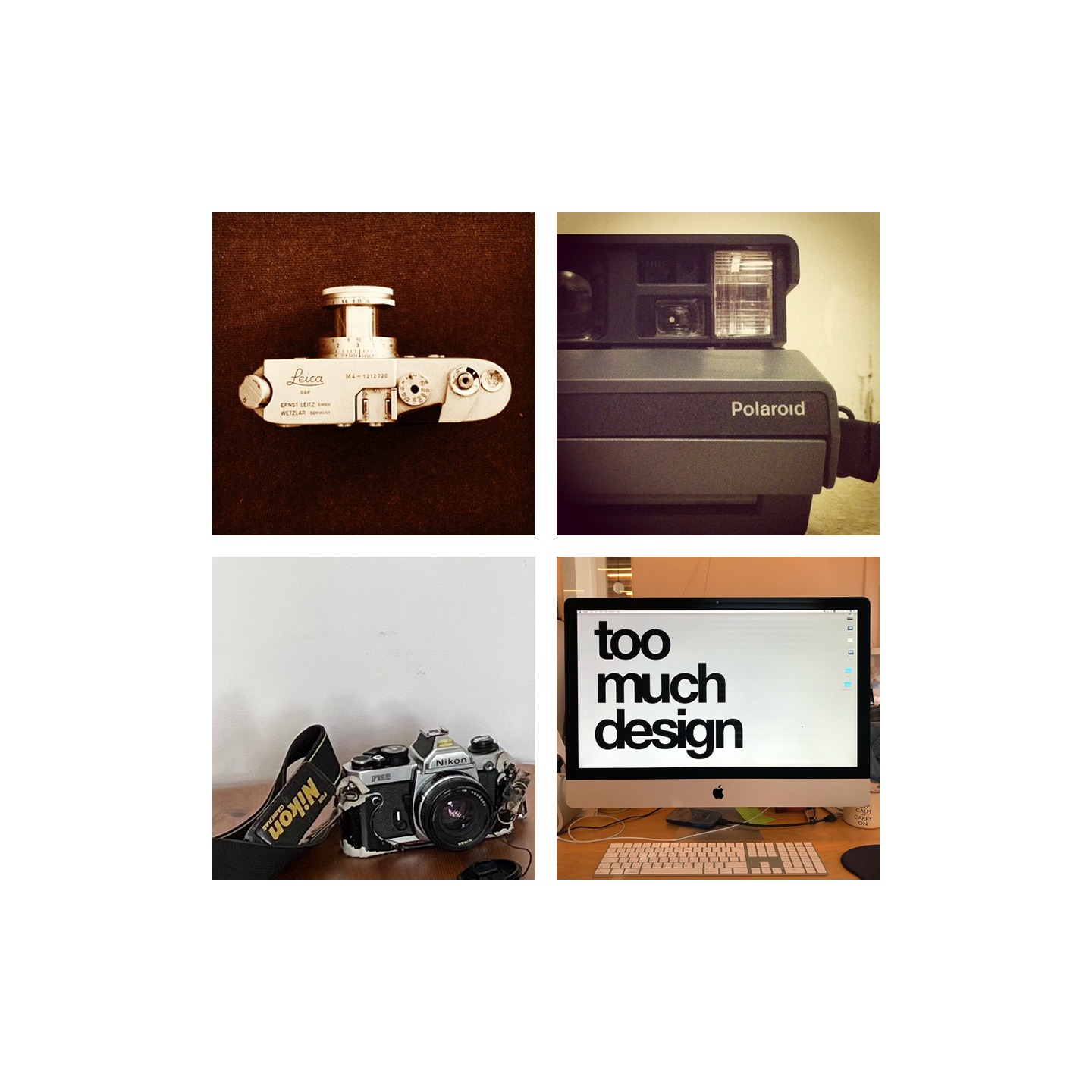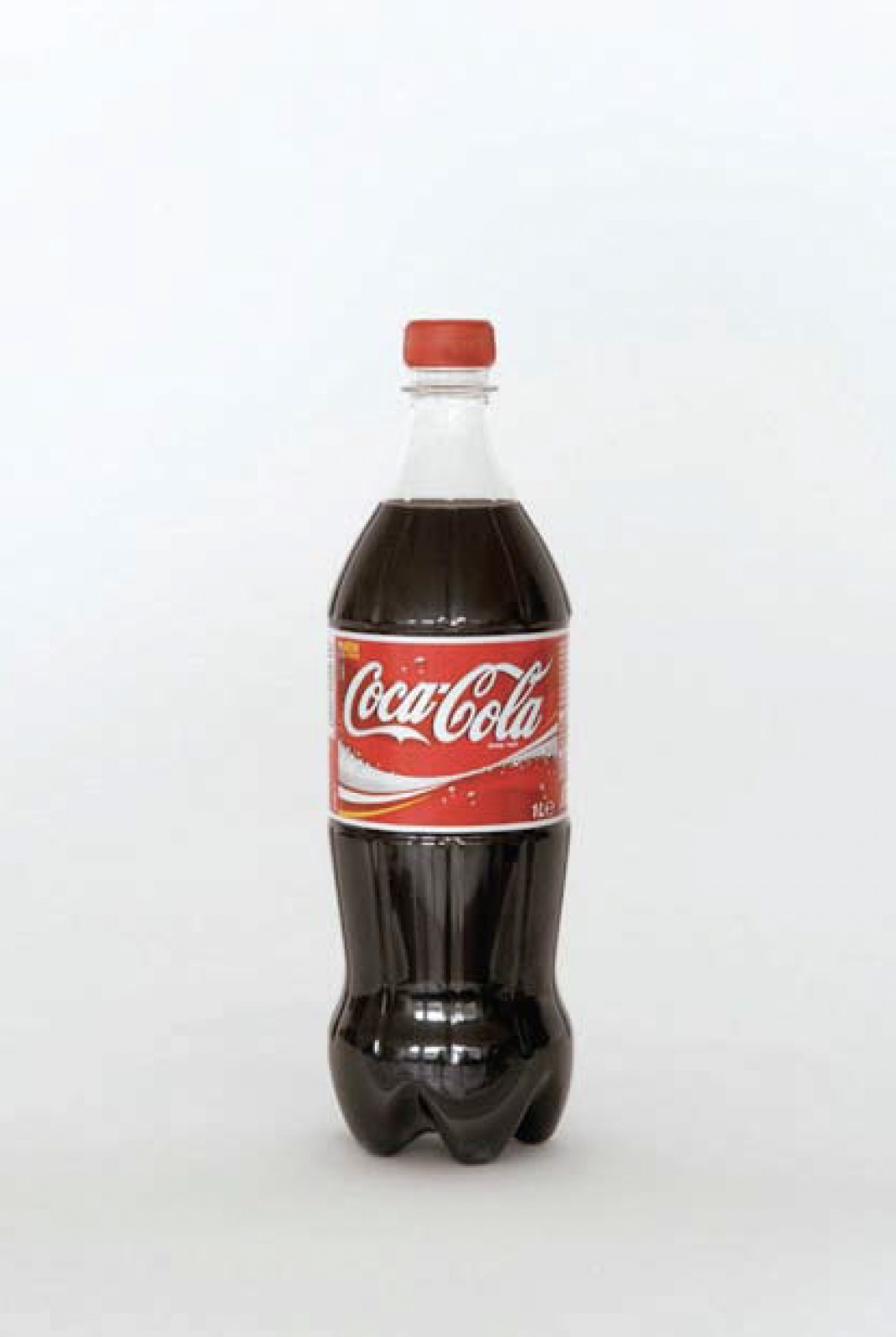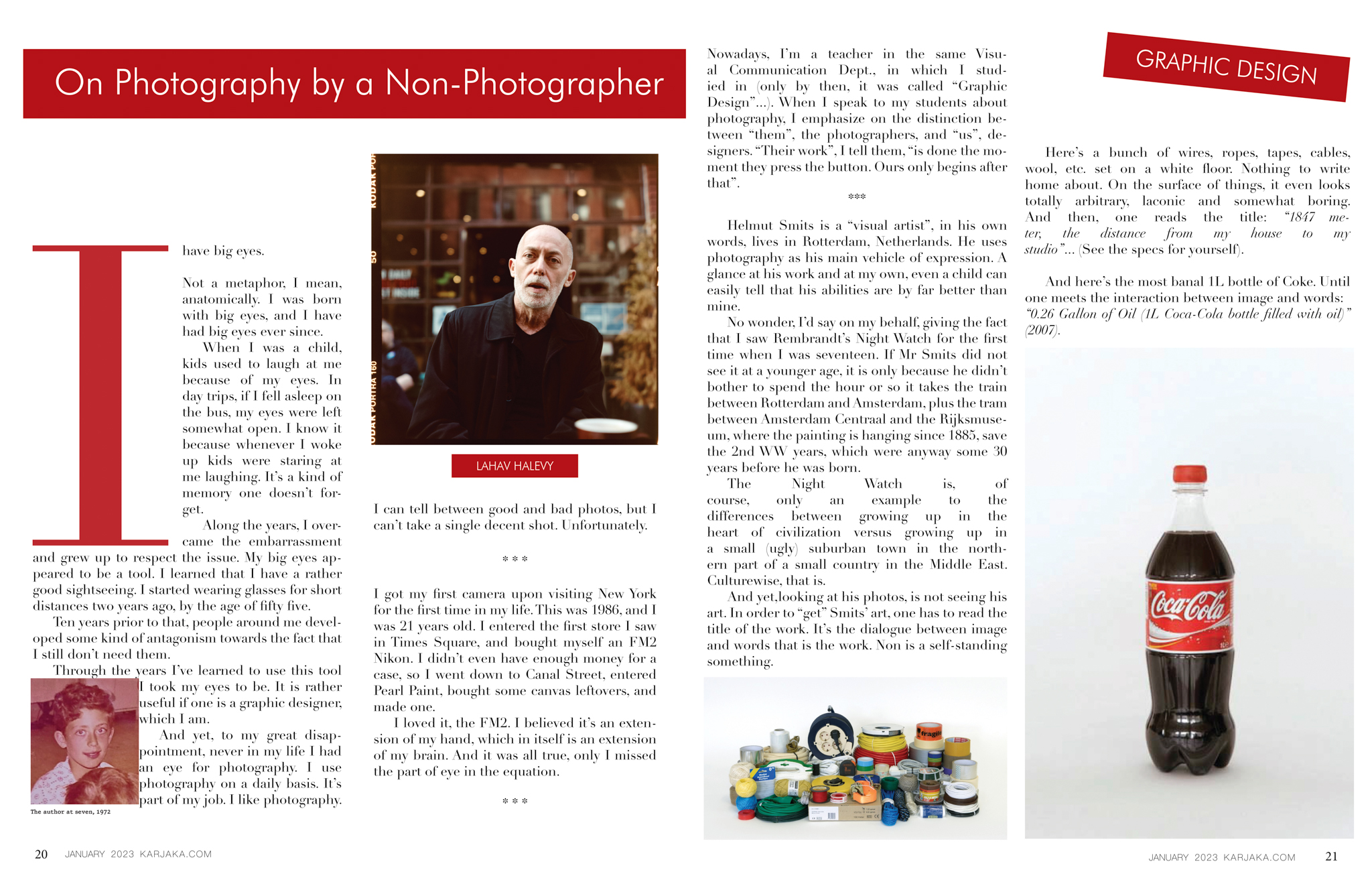
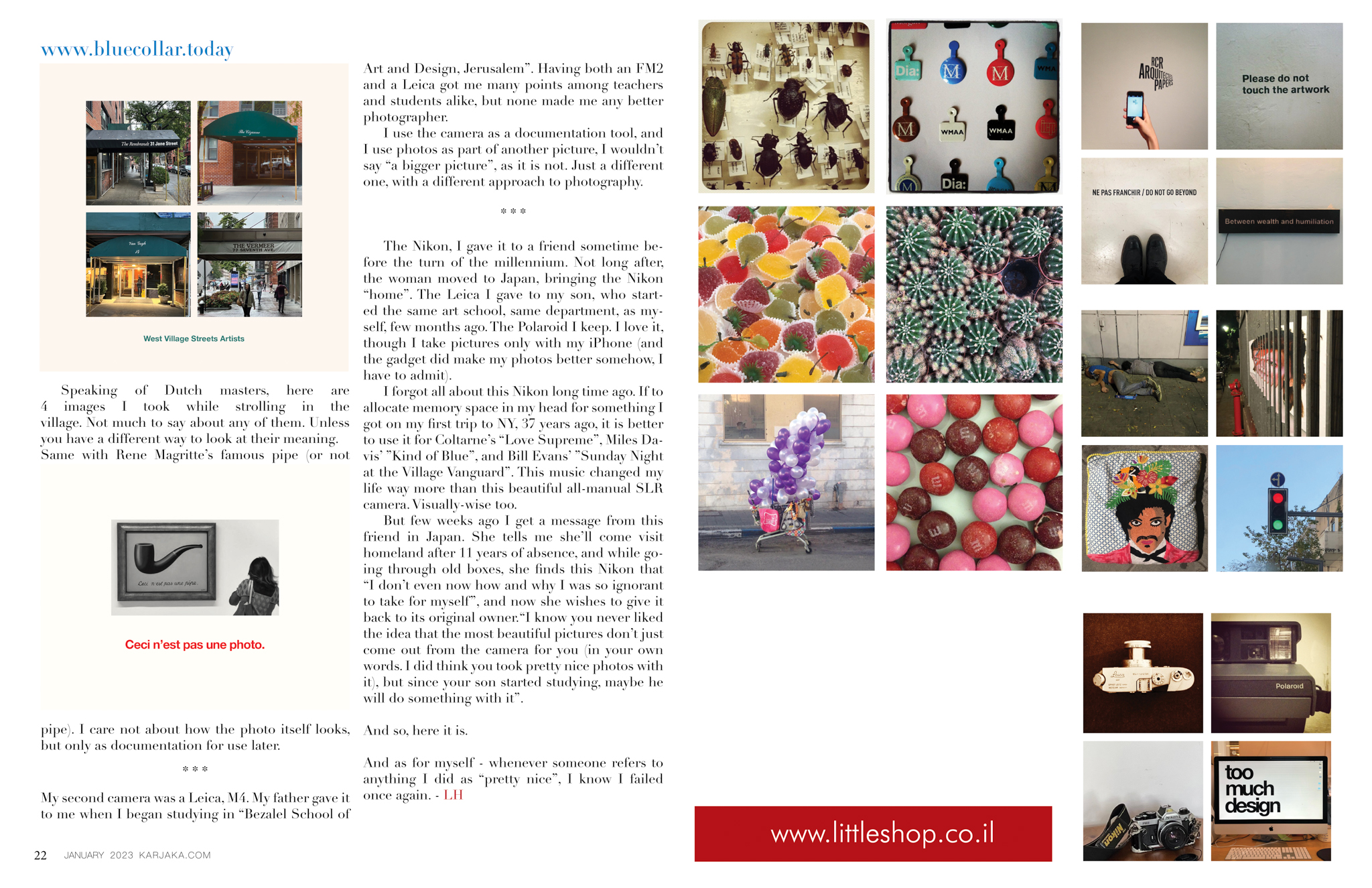
I have big eyes.
Not a metaphor, I mean, anatomically. I was born with big eyes, and I have had big eyes ever since.
When I was a child, kids used to laugh at me because of my eyes. In day trips, if I fell asleep on the bus, my eyes were left somewhat open. I know it because whenever I woke up kids were staring at me laughing. It’s a kind of memory one doesn’t forget.
Along the years, I overcame the embarrassment and grew up to respect the issue. My big eyes appeared to be a tool. I learned that I have a rather good sightseeing.
I started wearing glasses for short distances two years ago, by the age of fifty five.
Ten years prior to that, people around me developed some kind of antagonism towards the fact that I still don’t need them.
Through the years I’ve learned to use this tool I took my eyes to be. It is rather useful if one is a graphic designer, which I am.
And yet, to my great disappointment, never in my life I had an eye for photography.
I use photography on a daily basis. It’s part of my job. I like photography. I can tell between good and bad photos, but I can’t take a single decent shot. Unfortunately.
* * *
I got my first camera upon visiting New York for the first time in my life. This was 1986, and I was 21 years old. I entered the first store I saw in Times Square, and bought myself an FM2 Nikon. I didn’t even have enough money for a case, so I went down to Canal Street, entered Pearl Paint, bought some canvas leftovers, and made one.
I loved it, the FM2. I believed it’s an extension of my hand, which in itself is an extension of my brain. And it was all true, only I missed the part of eye in the equation.
* * *
Nowadays, I’m a teacher in the same Visual Communication Dept., in which I studied in (only by then, it was called “Graphic Design”…). When I speak to my students about photography, I emphasize on the distinction between “them”, the photographers, and “us”, designers.
“Their work”, I tell them, “is done the moment they press the button. Ours only begins after that”.
***
Helmut Smits is a “visual artist”, in his own words, lives in Rotterdam, Netherlands. He uses photography as his main vehicle of expression. A glance at his work and at my own, even a child can easily tell that his abilities are by far better than mine.
No wonder, I’d say on my behalf, giving the fact that I saw Rembrandt’s Night Watch for the first time when I was seventeen. If Mr Smits did not see it at a younger age, it is only because he didn’t bother to spend the hour or so it takes the train between Rotterdam and Amsterdam, plus the tram between Amsterdam Centraal and the Rijksmuseum, where the painting is hanging since 1885, save the 2nd WW years, which were anyway some 30 years before he was born.
The Night Watch is, of course, only an example to the differences between growing up in the heart of civilization versus growing up in a small (ugly) suburban town in the northern part of a small country in the Middle East. Culturewise, that is.
And yet,looking at his photos, is not seeing his art. In order to “get” Smits’ art, one has to read the title of the work. It’s the dialogue between image and words that is the work. Non is a self-standing something.
Here’s a bunch of wires, ropes, tapes, cables, wool, etc. set on a white floor. Nothing to write home about. On the surface of things, it even looks totally arbitrary, laconic and somewhat boring.
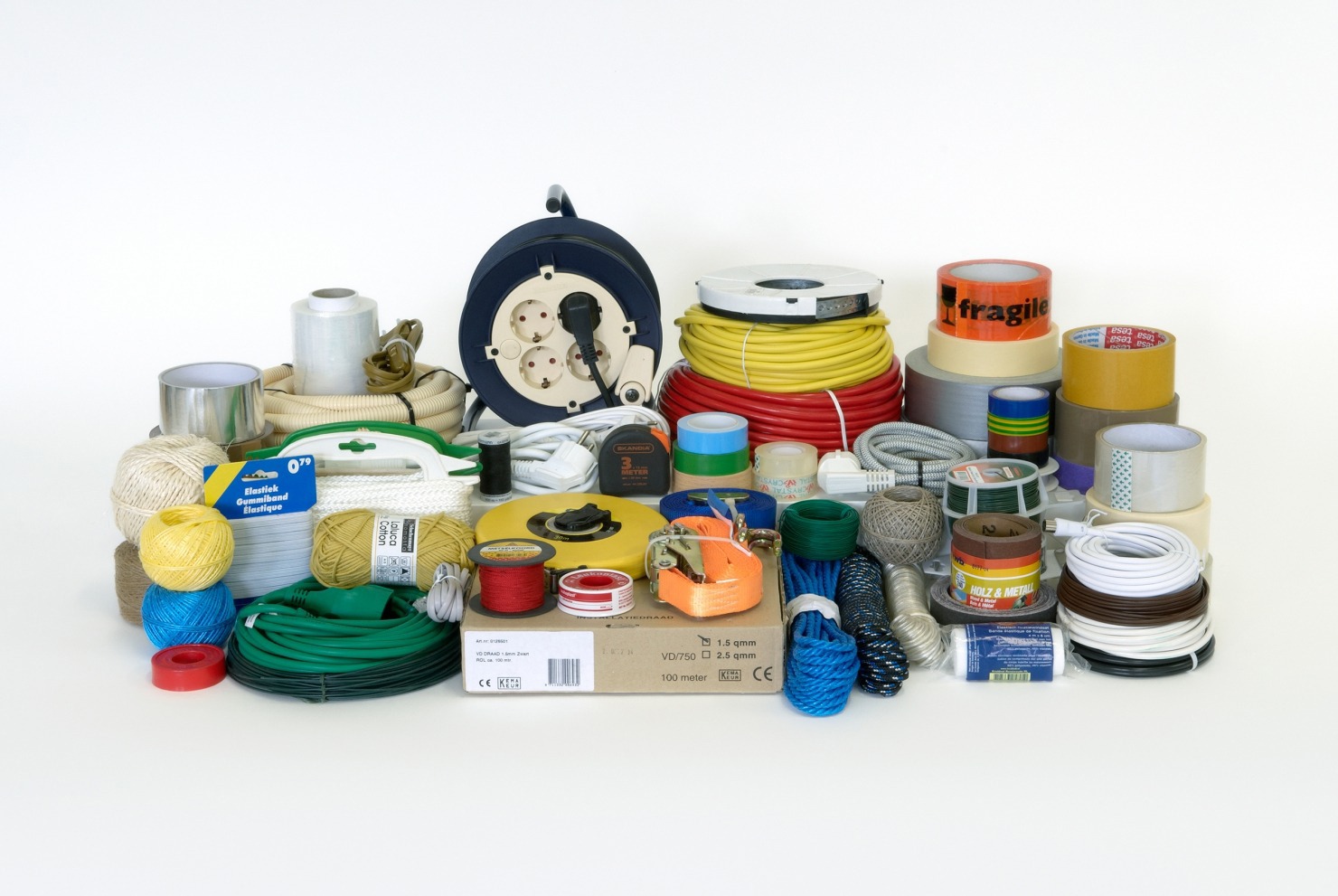
And then, one reads the title: “1847 meter, the distance from my house to my studio”… (See the specs for yourself).
And here’s the most banal 1L bottle of Coke.
Until one meets the interaction between image and words:
“0.26 Gallon of Oil (1L Coca-Cola bottle filled with oil)” (2007).
Speaking of Dutch masters, here are 4 images I took while strolling in the village. Not much to say about any of them. Unless you have a different way to look at their meaning.
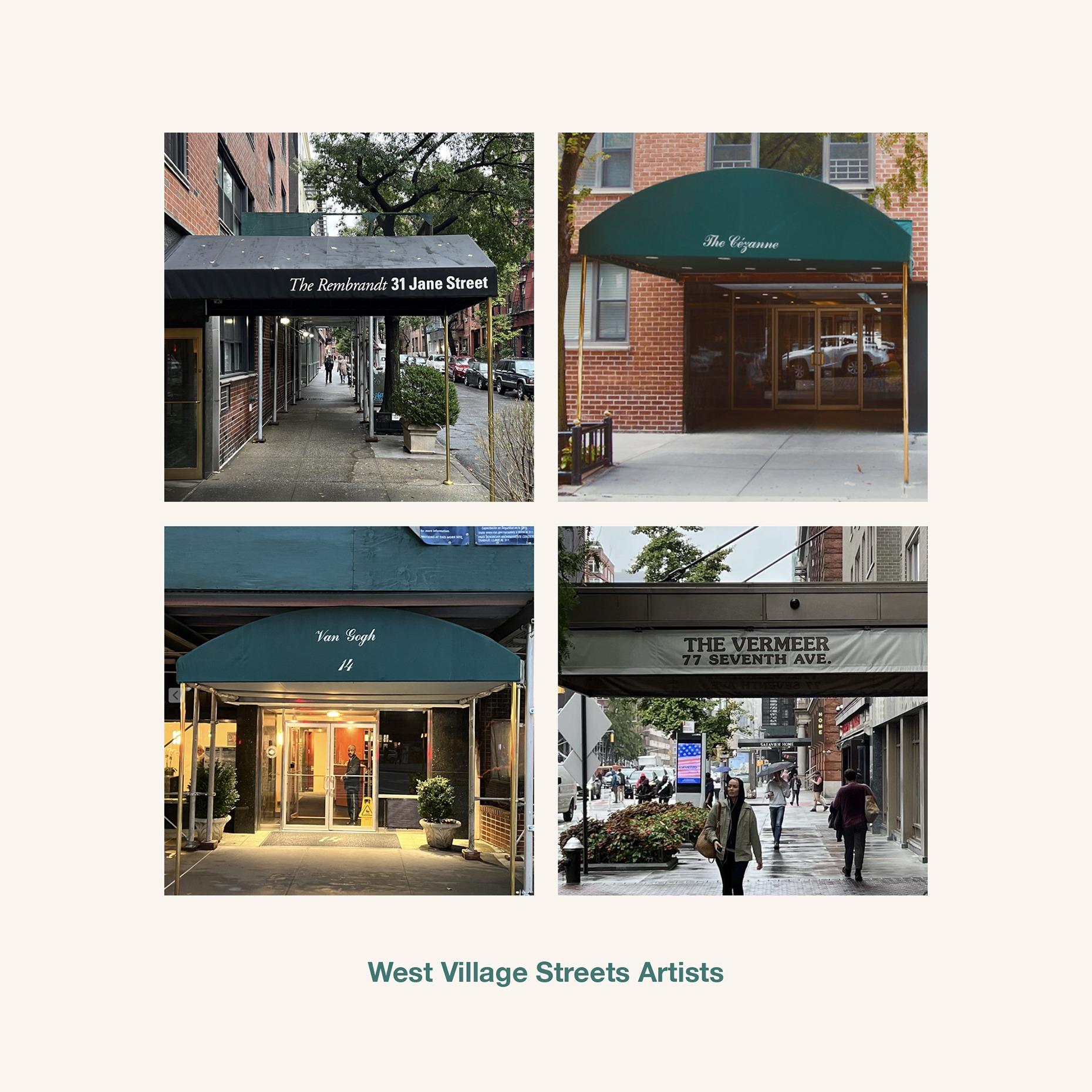
Same with Rene Magritte’s famous pipe (or not pipe). I care not about how the photo itself looks, but only as documentation for use later.
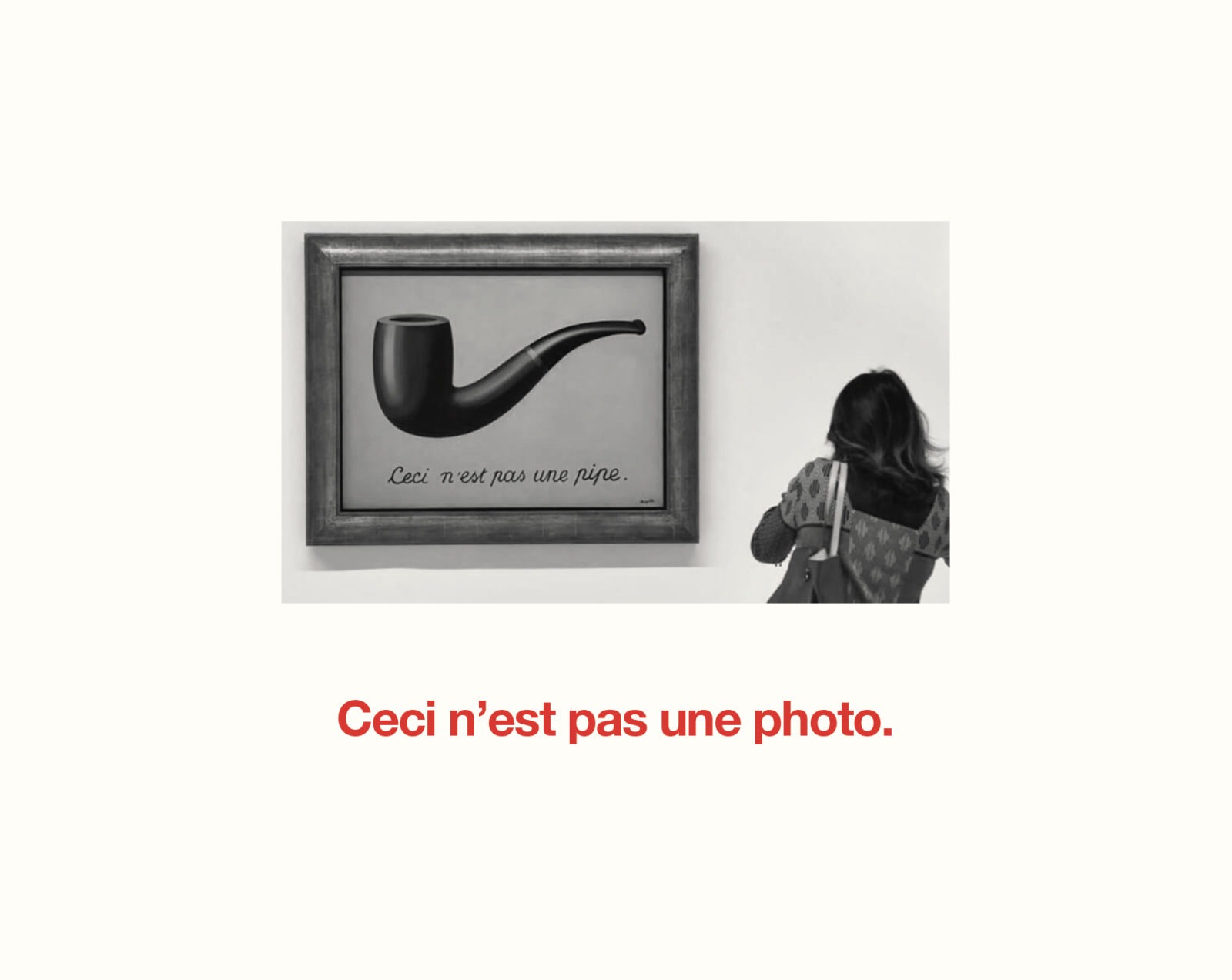
* * *
My second camera was a Leica, M4. My father gave it to me when I began studying in “Bezalel School of Art and Design, Jerusalem”. Having both an FM2 and a Leica got me many points among teachers and students alike, but none made me any better photographer.
I use the camera as a documentation tool, and I use photos as part of another picture, I wouldn’t say “a bigger picture”, as it is not. Just a different one, with a different approach to photography.
* * *
The Nikon, I gave it to a friend sometime before the turn of the millennium. Not long after, the woman moved to Japan, bringing the Nikon “home”. The Leica I gave to my son, who started the same art school, same department, as myself, few months ago. The Polaroid I keep. I love it, though I take pictures only with my iPhone (and the gadget did make my photos better somehow, I have to admit).
I forgot all about this Nikon long time ago. If to allocate memory space in my head for something I got on my first trip to NY, 37 years ago, it is better to use it for Coltarne’s “Love Supreme”, Miles Davis’ ”Kind of Blue”, and Bill Evans’ ”Sunday Night at the Village Vanguard”. This music changed my life way more than this beautiful all-manual SLR camera. Visually-wise too.
But few weeks ago I get a message from this friend in Japan. She tells me she’ll come visit homeland after 11 years of absence, and while going through old boxes, she finds this Nikon that “I don’t even now how and why I was so ignorant to take for myself”, and now she wishes to give it back to its original owner.
“I know you never liked the idea that the most beautiful pictures don’t just come out from the camera for you (in your own words. I did think you took pretty nice photos with it), but since your son started studying, maybe he will do something with it”.
And so, here it is.
And as for myself – whenever someone refers to anything I did as “pretty nice”, I know I failed once again.
